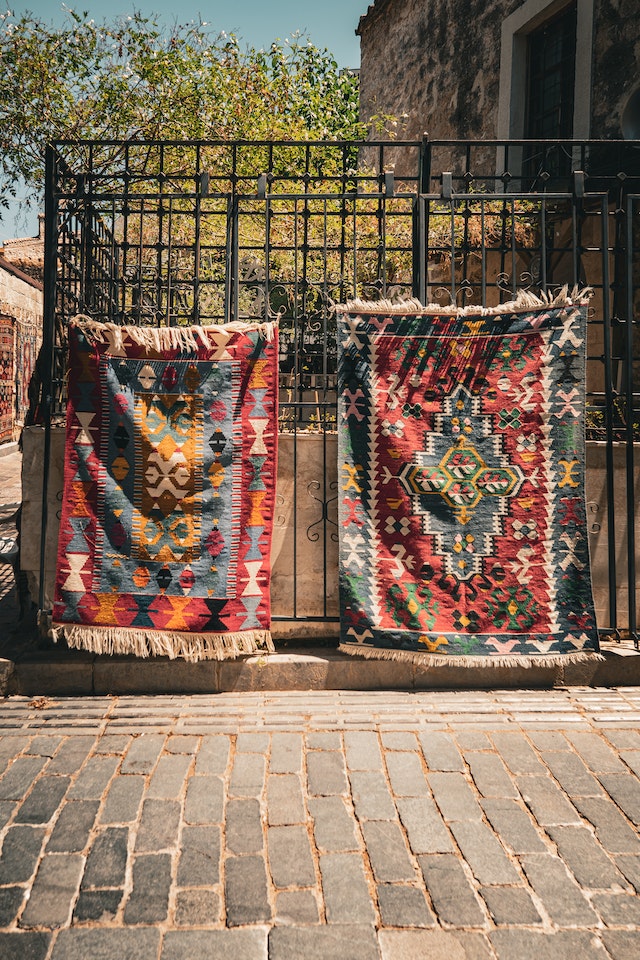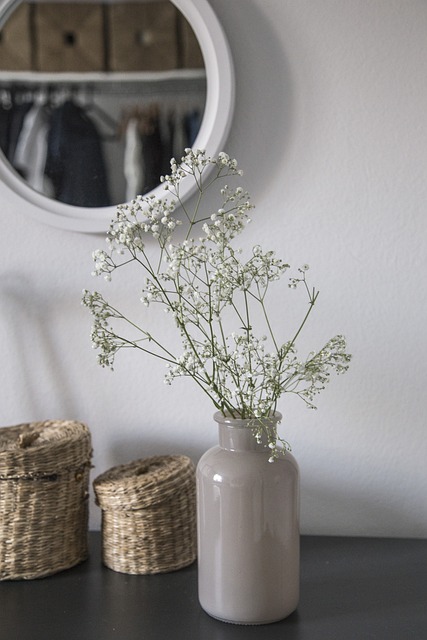

Introduction to Native American Rugs Mid-Century
Native American rugs from the mid-century period are renowned for their unique designs and vibrant colors. These works of art were created by skilled weavers who used traditional methods to create these exquisite pieces. Unlike modern rugs, these rugs feature intricate designs which draw upon the spiritual beliefs and cultural traditions of the tribes that crafted them.
Furthermore, these rugs often featured motifs such as geometric shapes, symbols and animals which represented important aspects of their lives. The use of bright colors was also commonplace in native American rugs during this time period. Typically, many natural materials such as wool were employed to create a rug which would last for generations.
Moreover, native American mid-century rug making techniques are still being used today to create beautiful works of art. By utilizing modern tools and technologies, it is possible to recreate a piece with the same level of precision and detail as one from the past. This ensures that these exquisite pieces remain available for future generations to appreciate and enjoy.
In conclusion, Native American mid-century rugs are truly remarkable works of art which can be appreciated by all regardless of age or culture. They stand out due to their intricate patterns, bold colors and timeless beauty that will never cease to amaze those who behold them. Consequently, they make wonderful additions to any home or office space adding both aesthetic beauty and historical significance at once!
Native American rugs of the mid-century period are a fascinating part of history. They were created with intricate designs and colors, expressing the culture and heritage of their makers. These rugs weren't merely decorations; they conveyed stories from long ago and served as reminders of an ancient way of life.
However, during this time, many Native Americans faced discrimination and poverty in the United States. This made it difficult to find materials for weaving, and even more challenging to produce quality work. Yet despite these obstacles, weavers persevered and managed to create beautiful pieces that are still appreciated today.
In addition to being aesthetically pleasing, these rugs also have great spiritual significance. Many traditional patterns used in them serve as symbols for good luck or protection against evil spirits. Furthermore, some believe the act of weaving itself is a form of prayer or meditation - connecting weavers with their ancestors and the land.
Overall, Native American rugs from this era are not only stunning works of art but also powerful symbols that tell stories from both past and present. Transcending generations, they remain a meaningful reminder of an important cultural tradition - one that has endured despite hardship and continues to bring joy into people’s lives today!
Native American rugs from the mid-century period come in a variety of styles and types. These intricate carpets were created by indigenous artisans from across North America, each with their own unique design aesthetics and methods of weaving. The most common types are Navajo rugs, which feature geometric patterns as well as pictorial motifs that often depict traditional stories or symbols. Additionally, there are hand-woven tapestries from the Pueblo peoples of the Southwest, as well as mat-like weavings by the Eskimos and Aleuts of Alaska.
Moreover, many Native American rug styles have evolved over time to include more modern influences while still retaining elements of cultural heritage. For example, some contemporary Navajo weavings incorporate abstract designs inspired by urban landscapes, while others contain representations of nature in unexpected colors. In addition to these vibrant textiles, some mid-century Native American rugs incorporate natural materials such as leather and fur into their construction for an extra layer of texture and depth.
Overall, Native American rugs from the mid-century period remain highly sought after for their beauty and historical significance. As collectors search for rare examples to add to their collections, they can find a wide selection of types and styles to choose from - each offering its own unique combination of materials and techniques that embody the culture's legacy. By appreciating these one-of-a-kind pieces, we can gain insight into this rich history while also preserving it for future generations.


Native American rugs have experienced immense popularity throughout the mid-century period. These textiles, often constructed from wool or cotton, are characterized by bright colors and intricate geometric patterns. Although Native American rug production had been occurring for centuries before this time, it wasn't until the 1950s that these items gained a large degree of recognition among those in mainstream society.
Interestingly, the sudden surge of interest in Native American rugs was largely due to a handful of influential art movements that were dominating the era. Abstract expressionism and minimalism were just two such movements that helped to introduce these beautiful works of art into living rooms across America. As a result, many Americans began to develop an appreciation for these unique handmade pieces, which could be seen as both decorative objects and works of fine art.
Furthermore, the availability of affordable yet high quality pieces during this time also contributed to their rising popularity. Specialty stores and trading posts began to appear all over the country selling Native American rugs at prices that most people could afford. This allowed even those on limited budgets to acquire one-of-a-kind items for their homes and proudly display them as conversation starters or centerpieces in any room.
In conclusion, it's clear that Native American rugs enjoyed immense popularity during the mid-century period due largely in part to several influential art movements and increased access to affordable pieces made by skilled craftspeople across America. As we continue our journey into modern times, it's safe to say that these vibrant works of art will remain popular fixtures in many households for years to come.
why was the native american, squanto, so valuable to the pilgrims?
Native American rugs are renowned for their intricate designs and bright colors, but few people know what materials were used to craft them in the mid-century period. Though wool was widely utilized, other fabrics such as cotton, jute, and even silk were also employed.
In addition to these natural fibers, synthetic materials including rayon and nylon came into play during this time. This allowed artisans to create bolder patterns with brighter dyes than ever before. Surprisingly enough, some of these details have survived into modern times despite the changes in technology.
Moreover, different tribes favored different materials depending on the climate they lived in as well as their respective cultural influences. For instance, some Native Americans preferred utilizing animal hair or plants like yucca while others opted for more traditional choices like wool or cotton.
Overall, it is remarkable how many resources were available to those crafting Native American rugs in the mid-century period. From natural elements like yak hair to man-made items like rayon and nylon, these pieces are a testament to both ingenuity and creativity of a bygone era. Additionally, it's remarkable that so many of these traditions remain intact today despite advancements over the years.

Preservation of mid-century Native American rugs today is an important endeavor. These beautiful, handcrafted pieces are not only aesthetically pleasing, but also hold deep historical and cultural significance. Unfortunately, many of these rugs have been lost throughout time due to the ravages of nature or human negligence.
However, there are still ways to preserve these rugs for future generations. The first step is proper storage in a cool and dry environment, away from direct sunlight and moisture. Additionally, regular vacuuming can help keep dust and dirt at bay which can damage the delicate fibers over time.
Furthermore, some organizations seek to provide financial assistance for restoration projects that aim to restore the original beauty of these precious artifacts. This includes reweaving damaged sections as well as repairing any loose threads or fraying edges using traditional methods. Moreover, these organizations also work hard to educate people on best practices for preserving their own rug collections such as avoiding exposure to direct sunlight and removing stains promptly with a damp cloth instead of harsh chemicals.
In conclusion, preservation of mid-century Native American rugs is crucial for ensuring that they can be enjoyed by generations to come. By following proper storage guidelines as well as taking advantage of restoration services when available, we can ensure that these priceless works will continue to remain part of our shared heritage for years to come.
Native American rug making has had a profound impact on modern design trends, particularly those of the mid-century. With its vibrant colors and intricate patterns, it's easy to see why these rugs have been so influential. From the bright motifs to the unique shapes and sizes, Native American rugs are truly works of art that transcend time.
The use of natural dyes gives each rug a unique hue and texture. These colors can range from deep reds and blues to subtle earth tones like browns and greens. This allows for an almost infinite array of combinations that can be used to create stunning designs. Furthermore, many Native American tribes crafted their own weaving techniques such as tapestry or twill which created intricate patterns that were both pleasing aesthetically and culturally significant.
Moreover, these rugs were often made in unusual shapes which allowed them to fit into any space with ease. This versatility was embraced by mid-century designers who sought to bring elements of nature into their interiors. They often used these bold shapes alongside abstract pieces creating dynamic compositions that could captivate guests with their beauty while still being functional pieces within the home.
Overall, Native American rug making has had a significant impact on design trends throughout history but particularly those of the mid-century era. Its use of natural dyes, intricate weaving patterns and versatile shapes brought an element of nature into homes around the world while also allowing for creative expression through color and pattern selection. In this way, Native American rug making continues to be an important influence in modern design today!
Native American rugs from the mid-century era are beautiful and unique works of art. Although their designs often differ greatly, they all share an incredible level of craftsmanship and an appreciation for traditional elements. Despite being created decades ago, these masterpieces remain timeless and highly sought after today.
The weaving process was complex and time consuming, with each rug taking up to several months to complete. Each one had its own distinct pattern, combining elements of the natural world such as plants, animals, and stars with intricate geometric designs. Colors were mainly taken from natural dyes made using local plants. This gave the rugs a vibrant appearance that has stood the test of time.
Moreover, Native American rugs also represent a rich cultural legacy that is still alive today. Many tribes use them in ceremonies or give them away as gifts during special occasions such as weddings or naming ceremonies. They have become symbols of resilience and pride for many Indigenous communities who have held on to their traditions despite centuries of oppression and mistreatment.
In conclusion, Native American rugs from the mid-century era are more than just pieces of artwork; they embody centuries-old cultures and provide an insight into how different groups have evolved over time. Furthermore, their beauty continues to captivate admirers around the world regardless of when they were made - truly a testament to their enduring quality and value!
Mid-century Native American rugs often feature geometric patterns and symbolic representations of nature, such as animals and plants.
Wool and cotton were commonly used to create Native American rugs during the mid-century. Colors were typically bright and bold, with dyes made from natural sources like plants and minerals.
The designs of mid-century Native American rugs often draw on traditional cultural themes, such as Navajo sand paintings or Pueblo pottery designs.
Modern production techniques have allowed for faster production of these items, while still maintaining their traditional style and quality craftsmanship.